Art Fairs
5 Highlights at the 2022 AIPAD Photography Show, From an Archive of an Artist’s Everyday Life to New Prints by a Lost Master
Forty-nine galleries from 23 cities are partaking in the event.
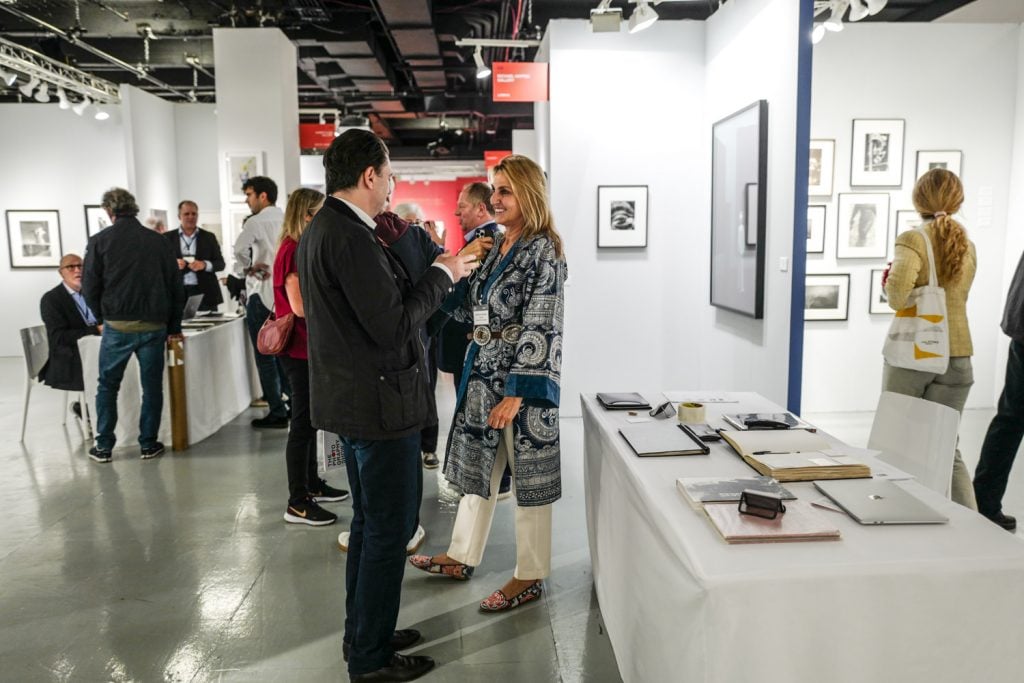
Forty-nine galleries from 23 cities are partaking in the event.

Taylor Dafoe

For the first time since 2019, the Photography Show, presented by the Association of International Photography Art Dealers (AIPAD), is back in New York—and it has a new home to boot.
Forty-nine galleries from 23 cities have set up shop at Center 415, a computer store-turned event space in Midtown Manhattan, for the 41st edition of the event.
On view, as usual, is a smorgasbord of photographic works, from vintage prints by canonized legends like Dorothea Lange, August Sander, and William Eggleston, to newer efforts by up-and-comers trying to join their ranks.
For our look at the fair’s offerings, we decided to focus on the latter group, highlighting only works created in the last three years (with one notable exception). See some of the standouts below.
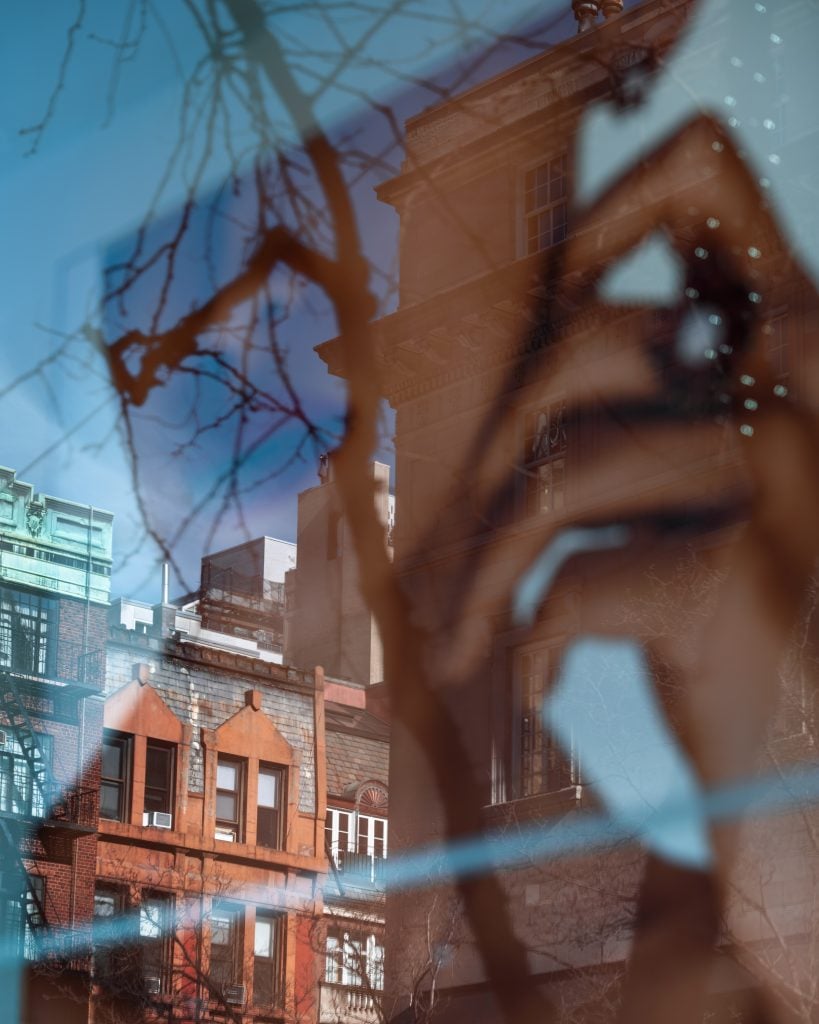
Anastasia Samoylova, Madison Avenue (2022). Courtesy of Laurence Miller Gallery.
Glossy advertisement imagery overlaps with shots of Manhattan buildings in Samoylova’s photographs to produce a kind of disorienting, double-exposure effect. But each is the product of just one click of the shutter, explained dealer Laurence Miller.
“These are all observations.” he said. “She’s not manufacturing them.”
Sure enough, look closer and you’ll see that Samoylova is photographing through storefront windows, capturing, in a single frame, both the ambient corporate ballyhoo in front of her and the industrial facades behind—New York’s past and present collapsed into one picture.
“These are dynamic pictures of how architecture’s being subjugated” to the “image-driven urban experience,” Miller added.
Six photographs from the series, a new body of work for the artist, are on view at Miller’s booth. Each is priced at $8,000.
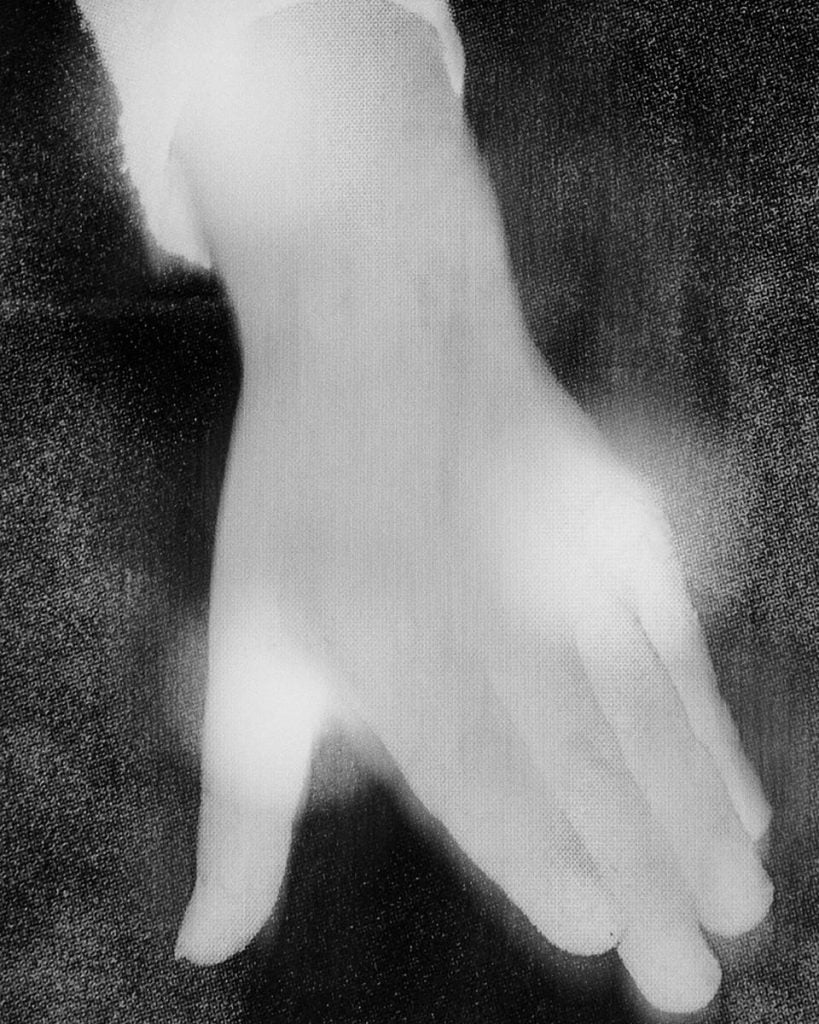
Narumi Hiramoto, Good News (2021). Courtesy of PGI.
Narumi Hiramoto was born just five years ago.
Well, sort of. The name is actually a pseudonym, adopted in 2017 by Japanese artist Yusaku Yamazaki (who was born in 1984) for an Instagram account on which he posts daily photographic experiments: trippy digital scenes, surreal collages culled from old images, and so on.
Many of the pictures under the Hiramoto name, including all examples on view at AIPAD, begin with a photograph of that day’s local newspaper in the artist’s hometown outside of Tokyo, effectively turning the project into a kind of living archive.
“It’s a re-edit of what we’re being told by the media,” PGI’s Miyuki Hinton said. “They really draw you in.”
The Tokyo-based gallery has partnered up with New York’s L. Parker Stephenson Photographs for a joint presentation at the fair. One half of the galleries’ booth—the Hiramoto half—is organized around a surrealist theme, the other half around the sublimity of nature.
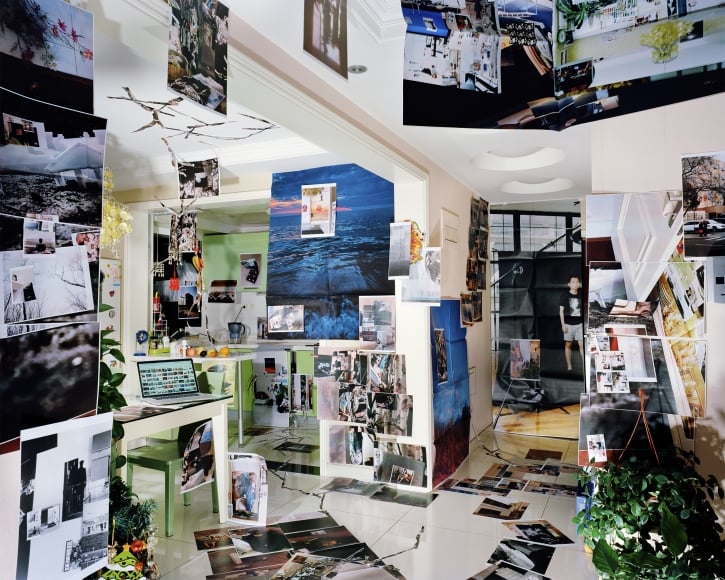
Guanyu Xu, Worlds Within Worlds (2019). Cuortesy of Yancey Richardson.
For his “Temporarily Censored Home” series, an example of which is one view in Yancey Richardson’s booth, photographer Guanyu Xu surreptitiously hung hundreds of printed images—some personal, some found, many overtly erotic—in his parents’ house in Beijing, transforming the bland domestic setting into a messy, gorilla-style installation. Then he photographed the results and took everything down before they returned from work.
For the artist, who grew up as a closeted gay person in a conservative home, the project was about “reclaiming and queering this heteronormative space that could otherwise never be his,” Richardson said. “Xu came to understand his sexuality through fashion and film magazines. That’s also how he learned about Western culture.” For that reason, she explained, “the printed image is a touchstone in his work.”
Xu’s piece, priced at $8,500, was snatched up by the Harvard Art Museums within the first hour of the fair, the dealer said. The artist’s works have also been acquired by SFMOMA, the New Orleans Museum of Art, and the Museum of Fine Arts, Houston.
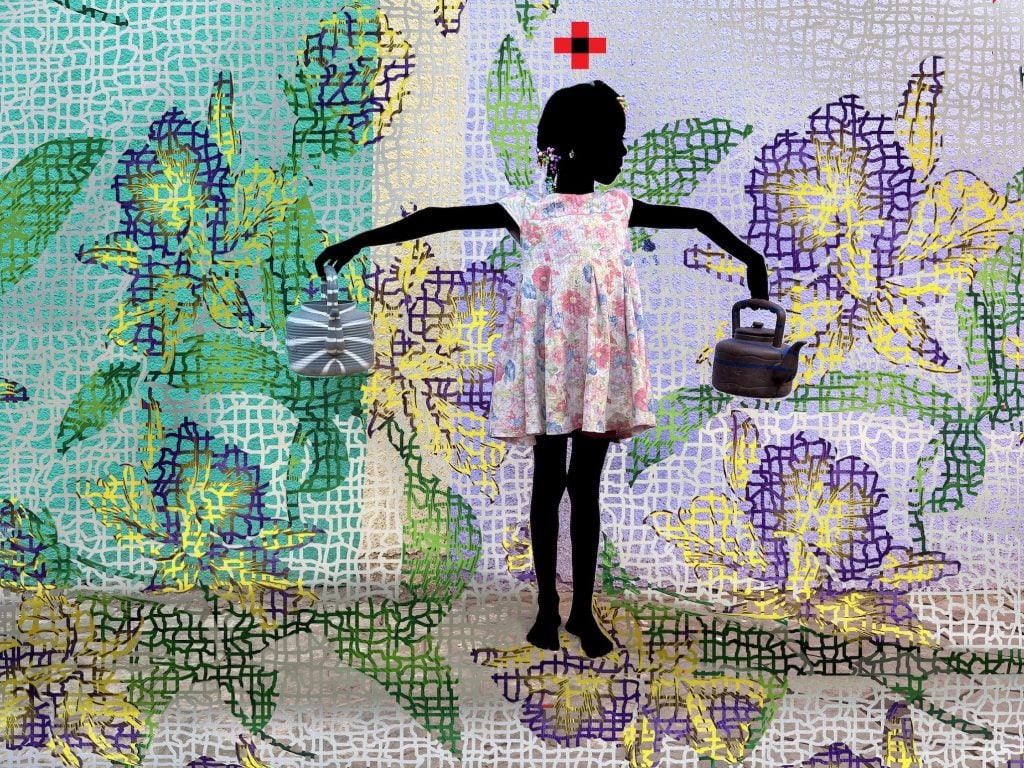
Saïdou Dicko, Opéra, Act1 T LUANDA3 (2022). Courtesy of Jackson Fine Art.
Vibrant weaving patterns surround many of the subjects in Saïdou Dicko’s portraits, as if they’re enveloped in meshy nets. The artist, who was born in Burkina Faso, digitally layers photographs of his family’s textiles to achieve the effect. It drums up a sense of movement and flow around his sitters, each of whom have been hand-painted over, flattened into black silhouettes (hence the name of his series, “The Shadow People”).
“He’s universalizing his subjects,” said Courtney Lee Martin, a sales director at Jackson Fine Art. Dicko grew up as a shepherd, she explained, noting that he’s “very tied to the spirits of animals, deeply connected to their shadows.”
Priced at $6,000 a pop, each of the large-scale, multi-media prints is unique. Half of the proceeds from Dicko’s sales go toward the artist’s foundation, which benefits communities in his home country.
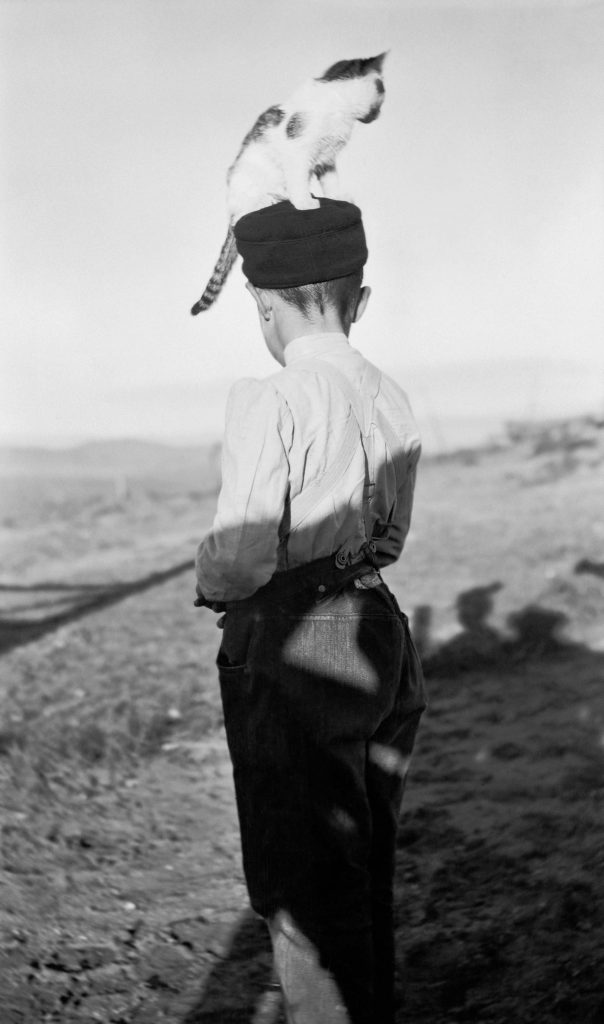
Lora Webb Nichols, Bert Oldham Jr. (1911). Photo courtesy of Danziger Gallery.
Lora Webb Nichols’s photographs aren’t new, but the prints on view at Danziger Gallery are. The booth marks the first time these pictures, all taken by Nichols in the first decades of the 20th century while working as a professional photographer in the small mining town of Encampment, Wyoming, have been displayed publicly. Until recently, few knew that the photos—let alone the photographer herself—existed.
Gallery owner James Danziger said he was introduced to Nichols’s pictures the way most people were, through a widely-praised book released last year. He worked with Nicole Jean Hill, the book’s editor, to produce gelatin silver prints from the artist’s own negatives, some over a century old. Each belongs to an edition of 15 and is priced at $2,500.
“You can see that this person couldn’t help herself from taking pictures in a way that makes them distinctive,” the dealer explained. “There’s something in every picture that’s a little bit off from being a snapshot. That’s what draws me to the work. There’s a generous edge to it.”
Danziger added that he’s planning shows around Nichols’s work at his galleries in New York and Los Angeles later this year.